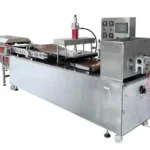What Are the Benefits of Using Python for Rapid Prototyping?

When it comes to the ways to achieve higher competitiveness, time is often of the essence. Accelerated prototyping is the process of quickly building a functional version of a product, suiting any type – whether it’s a web app, an automation tool, or an enterprise-level solution. What’s the aim of this approach? To verify ideas before market-ready implementation, attract investors, and gain internal buy-in while reducing time-to-market.
In contrast to a final product, a prototype is not polished or optimized for scale. Instead, it serves as a proof of concept that can evolve based on feedback and real-world use. Businesses that adopt rapid prototyping can pivot faster, minimize risks, and increase their chances of success.
Python is a widely adopted technology in the programming world that is flawlessly suited for accelerated prototyping. As of March 2025, Python leads both the TIOBE and PYPL indexes, surpassing languages like C++ and Java in popularity. Its active adoption ensures a vast ecosystem of libraries and frameworks, enabling rapid implementation and iteration. Using Python for prototyping allows businesses to successfully validate concepts, attract investors, and secure internal support, all while minimizing time-to-market.
In this post, we’ll explore the benefits of using Python for rapid prototyping, covering its role in enhancing competitiveness through smooth and efficient development.
Key Benefits of Using Python for Rapid Prototyping
Python comprehensively addresses the prototyping process, making it efficient, optimized, and seamless. Let’s cover why Python is the go-to language for accelerated development and how it helps teams create functional, scalable prototypes in record time.
Simple, Readable Syntax
Python’s clean and intuitive syntax makes it one of the most accessible programming languages available. In contrast to languages with complex syntax and steep learning curves, Python allows software engineers to write functional code faster and with fewer lines. Its efficiency is crucial in building prototypes faster.
Moreover, Python’s readability facilitates collaboration across technical and non-technical team members. Technical founders, designers, and product managers can follow along (or even contribute) without requiring extensive engineering knowledge. The cross-functional accessibility offered by Python streamlines communication and accelerates iteration cycles.
Massive Ecosystem of Libraries & Frameworks
One of the top advantages of using Python for rapid prototyping is its vast ecosystem of libraries and frameworks. With such an extensive set of tools, software developers can quickly find and integrate solutions, ensuring their prototype remains both functional and scalable.
- Web development. Django and Flask enable rapid backend development, enabling you to launch an MVP within days.
- Data science & analytics. Pandas and NumPy simplify data manipulation, which is inalienable for analytics-driven prototypes.
- Machine learning & AI. TensorFlow and scikit-learn provide ready-to-use algorithms for AI-driven applications.
- Automation & APIs. Selenium, Requests, and FastAPI facilitate automation and API-driven projects.
To use the Python ecosystem to its full potential, reach out to the PLANEKS Python web development team. Thus, you can get a reliable tech vendor that is adept at using Python’s extensive libraries and frameworks and can pick the best tech stack to meet your prototyping needs.
Excellent Support for MVP and Web Development
For startups and product teams, getting an MVP into the hands of users soon is crucial for further prosperity. Python is a great fit in this regard by offering robust frameworks tailored for web and API development:
- Django. Ideal for implementing full-featured web applications and admin panels in record time.
- Flask/FastAPI. Perfect for lightweight, API-first applications prioritizing speed and flexibility.
- Integration-Friendly. Python cohesively connects with front-end technologies, databases, and third-party APIs, optimizing the process of developing fully-fledged solutions.
Such tools enable teams to move from concept to functional prototype in days or weeks rather than months while helping businesses test market demand and adapt the future product to match it.
Versatility Across Use Cases
Python is a multi-purpose language that supports a diversity of domains, helping entrepreneurs to test different ideas within the same ecosystem. In case you’re prototyping a SaaS product, a data dashboard, or an AI-powered recommendation system, you can use Python, which offers the flexibility to pivot between these use cases effortlessly.
Within any aspects like backend systems, scripting, automation, and more, Python assists businesses in exploring diverse technological solutions without switching languages, cutting the complexity of development workflows.
Huge Developer Community and Open Source Support
A strong developer community is a core reason to use Python for rapid engineering solutions under tight deadlines. It introduces one of the largest and most active programming communities, offering:
- Extensive tutorials and documentation
- Active forums and StackOverflow discussions
- Open-source boilerplate code and GitHub repositories
A wealth of community-driven resources accelerates problem-solving, supporting developers in handling roadblocks easily. Instead of spending hours debugging an issue, a simple online search can often deliver an immediate solution, saving valuable time during the prototyping phase.
Smooth Transition from Prototype to Production
Unlike some rapid prototyping tools that require a complete rewrite when moving to production, Python provides the facilities for a seamless transition. By following best practices, teams can refactor and scale their Python-based prototypes into full-operational products without starting from scratch.
With the right architectural decisions, such as database optimizations, modular code structure, and cloud deployment strategies, Python prototypes can progress into high-performance, production-ready applications. Its continuity minimizes technical debt and ensures long-term viability.
When Python Might Not Be Ideal
While there are many benefits of using Python for rapid prototyping scenarios, it may not be the best fit for every use case:
- High-performance, low-level systems. If you’re developing a real-time gaming engine or an embedded system requiring high-speed execution, C++ or Rust may be more suitable.
- Mobile-native prototyping. While Python can be used for mobile development through frameworks like Kivy or BeeWare, it is not the primary language for iOS or Android apps. For native mobile experiences, Swift (iOS) and Kotlin (Android) remain better options.
That said, Python can still serve as a backend or API layer in mobile applications, enabling cross-platform compatibility while leveraging its strengths in rapid development.
Conclusion
Using Python for rapid engineering solutions is a robust roadmap for startups, product teams, and innovators seeking to validate ideas quickly and efficiently. With its readable syntax, solid library support, and seamless transition from prototype to production, Python enables teams to experiment with confidence.
By leveraging Python’s capabilities, especially when ordering the services of a credible IT provider, businesses can reduce development time, lower costs, and gain early user feedback – key factors in achieving product-market fit. All in all, for most of your prototyping needs, Python provides the foundation needed to build, iterate, and scale.
For those looking to prototype their next big idea, Python brings a valuable combination of speed, flexibility, and community support, catering to the needs of innovative software development.

The Hidden Business Power of Storytelling Through Books

Diamond Painting Apps & Digital Tools for 2025 Artists

Meeting Global Tastes: The Versatility of Commercial Tortilla Makers

Accelerating drug discovery through the DEL-ML-CS approach

AI in Marketing Is No Longer a Buzzword — It’s the Strategy

Benefits of Working with a Bathroom Remodeling SEO Company

The Full Guide To Penetration Testing

Pixel 10 Pro Fold Case: Why Choose Aramid Fiber?








